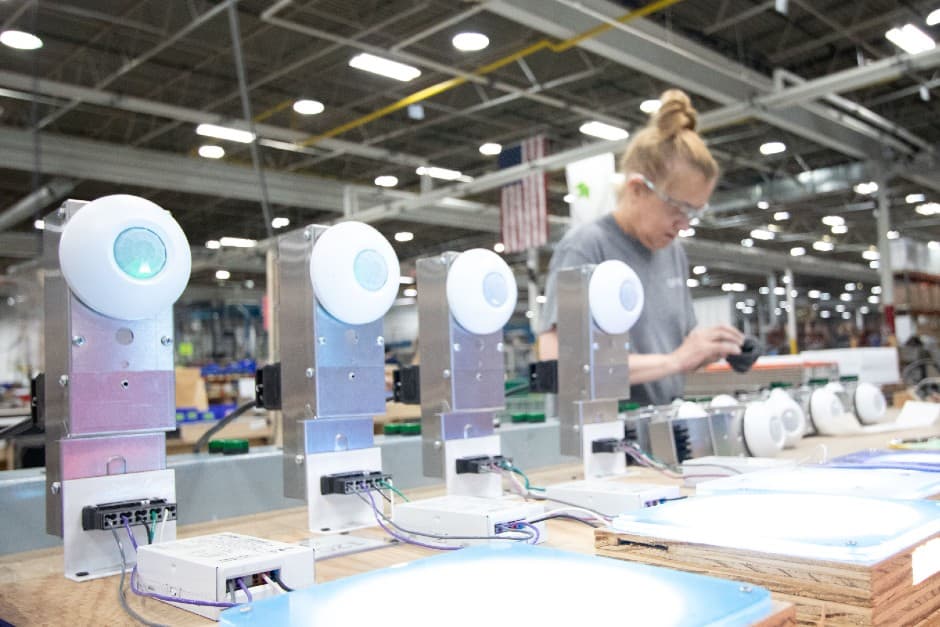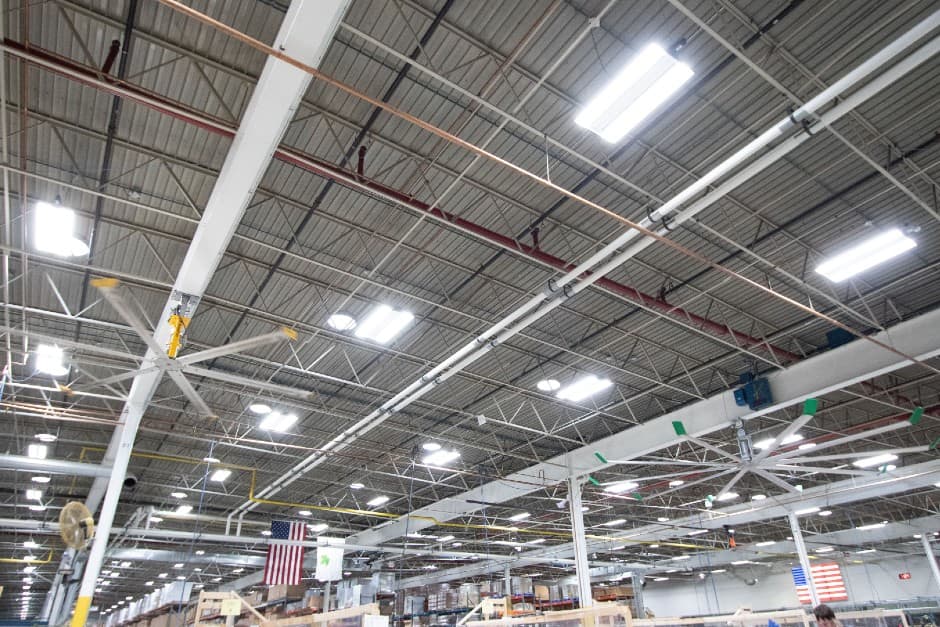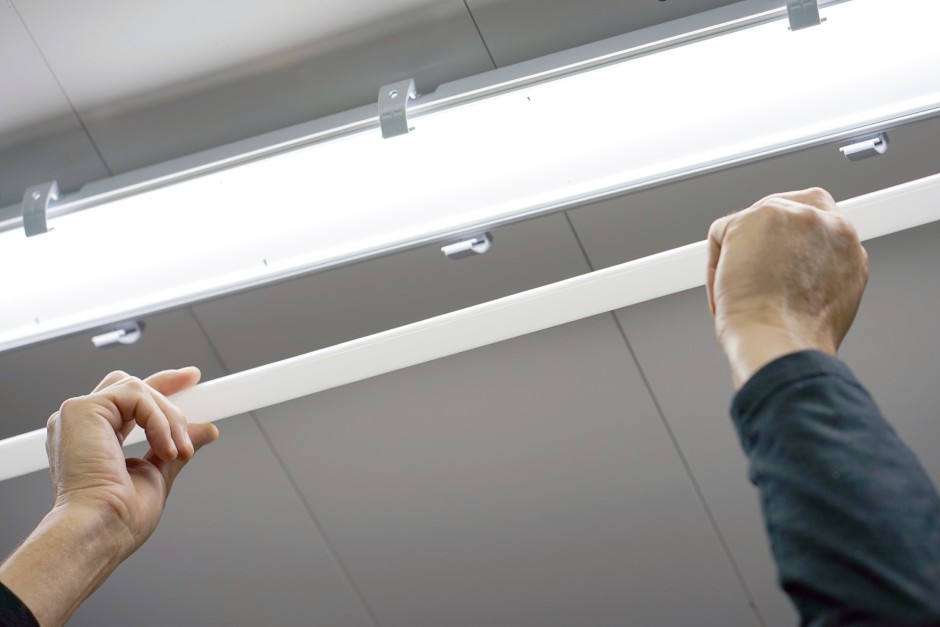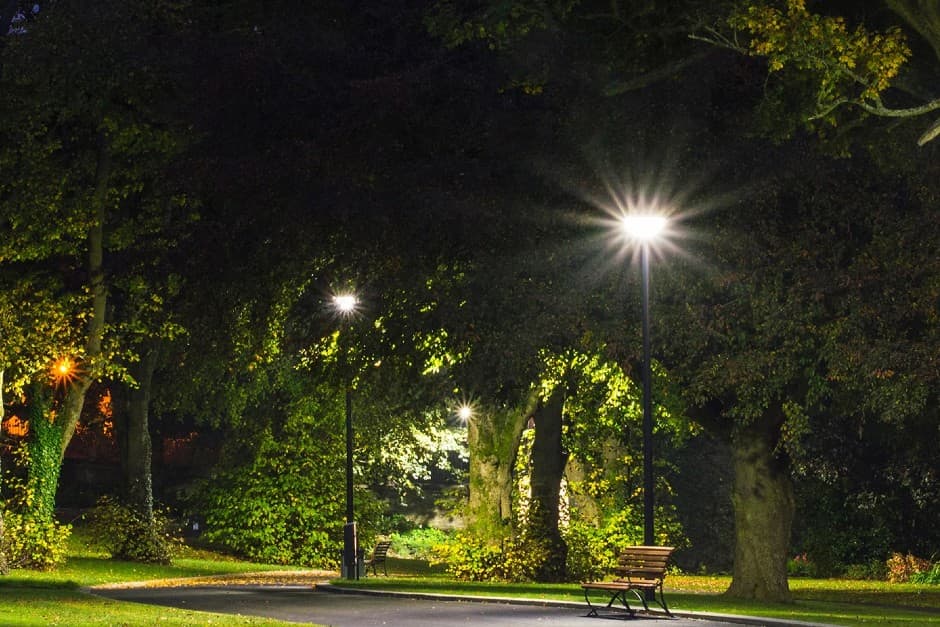Why Lighting Control Systems Are Key in Commercial Building Automation

HVAC, closed-circuit TV, occupancy sensors, and fire alarms are some of the most common ways automation is used in buildings to keep occupants comfortable and secure. But that’s only scratching the surface of what’s possible.
Building automation serves many purposes, chief among them are energy conservation and heightened safety and productivity. Lighting control systems in particular are a critical component in building efficiency, and here’s why.
Benefits of Automated Lighting Control Systems
The primary benefits of lighting control systems are:
- Increased energy savings
- Improved safety
- Enhanced comfort
- Increased productivity
- Better security
- Optimized facility utilization
- More insights into your facility
Increased Energy Savings
LED lighting controls allow for programmable time settings or motion sensors that enable users to light a space only when it’s occupied, decreasing energy costs.
Controls also let facility managers determine the appropriate light levels based on how a space is used, and its configuration. Lights can be programmed to only operate at full brightness where and when necessary, saving energy.
An additional 24-38% savings are possible with motion sensors, timers, and other controls.
Improved Safety
Programmable lighting ensures the lights are on for workers when and where they need to be, rather than relying on manual operation. With the right lighting, the likelihood of human error and injury are significantly reduced — especially in storage or manufacturing settings, where forklifts and other heavy machinery are in constant use.
Enhanced Comfort
Appropriate lighting means workers’ eyes don’t tire, because they don’t need to strain to see the task at hand. It also reduces the risk of headaches for those who are sensitive to bright light. No manual dimmer is needed, as light control systems set brightness automatically.
Increased Productivity
Increased comfort leads to increased productivity. Poor lighting can contribute to workers’ stress and frustration, but when they’re able to clearly see what they’re doing, they’ll be more focused on their tasks and less likely to make mistakes.
Better Security
Exterior or interior lights triggered by motion sensors and connected to security systems help deter crime, and can alert managers and/or authorities to activity taking place where occupancy isn’t expected or allowed.
Optimized Facility Utilization
Optimal lighting in each distinct area within a facility ensures every inch is lit exactly as needed. For example, automated photo sensors can turn a room’s lights off during the day if daylight alone is sufficient, while automated controls can adjust lights to be bright in rooms where it’s required or dimmer in areas where it’s more appropriate.
Lighting systems can integrate with HVAC systems, triggering a change in temperature or cooling when the occupancy sensors see that a room is in use, and do the same once sensors determine that the room is unoccupied.
Many lighting controls allow for real-time adjustments and monitoring — on site or remotely — for added flexibility.
More Insights Into Your Facility
Automation and control dashboards give users access to data that show what’s happening in every space within the facility, including how often light is used, when it’s used, room occupancy numbers, and more.
With these numbers you can identify rooms where more or less light is required, how frequently rooms are being utilized, and the number of lights being used while that room is occupied. With this and other data available with automation, you’re able to identify cost-saving opportunities and optimize how each space is being used.
Case Study: How PanelTEK LLC Incorporated Controls to Save Money
Future-proof Your Facility & Improve ROI With Lighting Automation
As lighting automation technologies continue to advance they’ll offer greater energy efficiency. It pays, then, to implement systems that take advantage of the latest innovations. Even if you don’t intend to conduct a complete overhaul of your current LED lighting system, you can still install control systems that utilize what you already have in place.
Plus, artificial intelligence (AI) is expected to influence lighting control systems by automating some of the initial processes, like programming, design, and setup. This could reduce the amount of manual steps required — leaving workers with additional time to spend on more valuable work.
Lighting Control Options
While simple sensors and controls are available to handle some of the basic tasks, facilities may also opt for more complex automation and IoT (internet of things) networking for a central control hub and added features.
Motion sensors and timers are the baseline solutions for cost savings and improved efficiency, but IoT networks take it to the next level with a more holistic approach allowing command of the entire building and greater data gathering capability.
Subscribe to Energy Insights

5 Commonly Asked Questions About Commercial LED Lighting

Commercial Lighting Trends: Fluorescent Lamp Bans and LED Alternatives
